Accessibility for “Showcase of Czechoslovakia”
Jan 1, 2022

Schindler escalators, BREMA elevators, are part of revitalization of Prague Metro station that opened in 1980.
With deep red balustrade panels accented with stainless steel, the escalators serving the Jiřího z Poděbrad metro station in Prague, the capital and largest city in the Czech Republic, appear older than their roughly 42 years. “Old” is not to say shoddy, though: The units impart a strong, “They don’t make them like that anymore” vibe, with attention to detail such as the thin, silver vertical accents on the balustrades that impart a sense of quality and style. Anna Švarc, chief architect of the Prague Metro, wishes the escalators could stay.
CEO at project subcontractor technological equipment supplier BREMA Ing. Jaroslav Hyhlík told ELEVATOR WORLD that all those involved in the revitalization want to keep its genius loci (protective spirit of a place)[1] intact. Unfortunately, at least in terms of the escalators, that is not possible. In a summer 2021 announcement that it had been awarded a EUR50-million (US$56.5-million) contract to modernize the station, general contractor STRABAG — which handles the intense underground boring — observed that the Soviet-era “Leningrad” escalators no longer meet the technical and economical requirements of Prague Public Transit Co., Inc. (DPP), which operates the metro.[2]
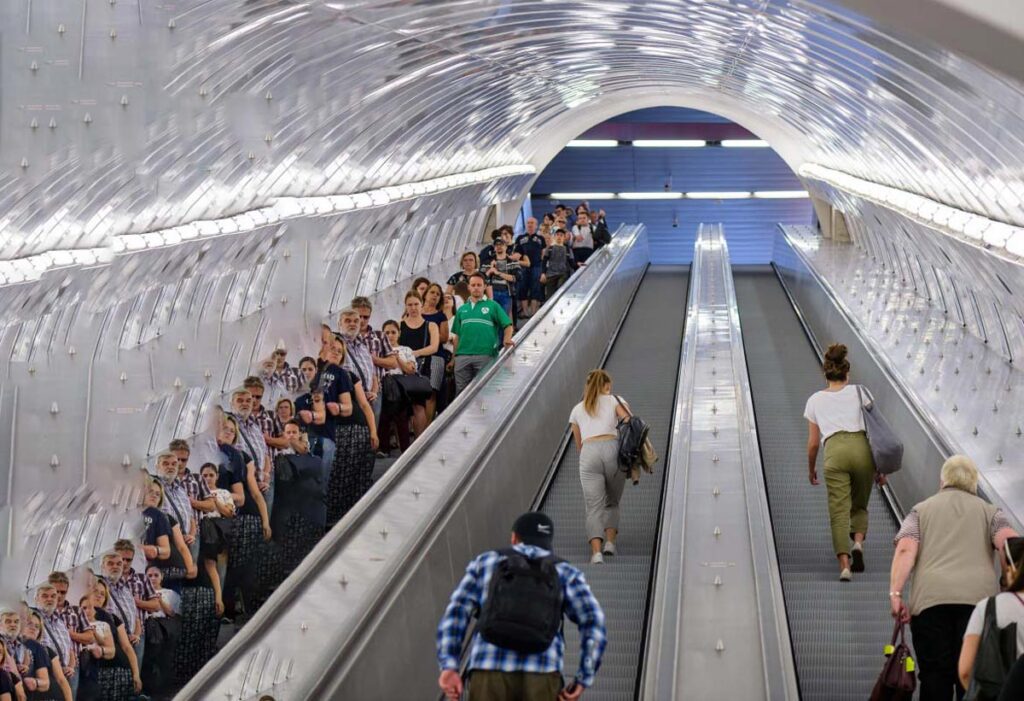
Švarc elaborated:
“During reconstruction of the station, we are trying to preserve as much of its original design and character as possible. Nevertheless, escalators, in this case, are considered a purely technological element, where any deviations from standards are extremely costly and run the risk of incompatibility with norms and internal technical guidelines. Therefore, although the original escalator design is in dark tones with a textured wooden covering, the project is now working with a classic stainless steel finish.”
The architect then asked your author if she knew of any feasible alternatives. Research would have likely yielded some, but, again, cost considerations and compliance requirements would likely squash any possibilities.
Hyhlík said that BREMA, through its sister company AZD, has delivered many escalators to the Prague Metro over the years. BREMA and AZD are among STRABAG’s subcontractors. Hyhlík told EW his company worked closely with Schindler to develop an even heavier-duty adaptation of its 9700 escalator to fulfill technical requirements of the metro, including at the Jiřího z Poděbrad station. He pointed out that escalators there will be some of the longest in the metro with a transport height of 36.59 m.
While they will not be “Leningrad”-style escalators, Schindler 9700s’ sleek, stainless-steel appearance should do little to detract from the station’s genius loci. Named after the eponymous square above it, the Jiřího z Poděbrad station features anodized aluminum tiles in shades of green and gold.[3] Circular and square tiles are symmetrically arranged and joined by other wall and ceiling materials such as marble and granite.
“Visual Smog”
In a recent article in CZECI-IDESIGN magazine that described the metro as a “showcase of Czechoslovakia,” Švarc said that part of her mission is to minimize what she calls “visual smog,” such as illegal advertising throughout the system, and create a sustainable, pleasant space “that represents us as a society.”
Providing some history of the metro, which launched in 1974, Švarc told CZECI—IDESIGN:
“At the time of its creation, the metro was, I assume for political reasons, like the whole of the Czechoslovak Socialist Republic, a shop window. The expression of the subway was majestic, rich, cultural and, of course, social. It was the work of architects and designers and built from noble and innovative materials with an emphasis on quality and detail. It was perceived as representative public [construction] for the public. On the other hand, it was a propaganda tool. After the revolution, all politics were removed from the subway or clogged with dust. However, beneath the layer of visual smog is still the top design, material and, in fact, the historical legacy. We inherited a very valuable thing, which we never perceived as value.”[5]
Founded in 1974, the Prague Metro was under totalitarian rule for 15 of the 41 years of Communism. From 1948-1989, “Communist ideology permeated citizens’ lives and dominated all aspects of society.”[6] After the totalitarian regime’s rapid collapse in November 1989, the process of renaming some of the metro stations began. Jiřího z Poděbrad station’s name was deemed acceptable since it is named for its historic location. Today, the system has three lines — A, B and C — served by 61 mostly underground stations and covering 65.2 km. Each line is represented by its own color on maps and signage: A, green; B, yellow; and C, red. Jiřího z Poděbrad is part of Line A. Line D, the 10.6 km blue line that will be served by 10 stations, is under construction.[7] A consortium that includes STRABAG was awarded the contract in summer 2021.[2] Prior to the pandemic, approximately 1.6 million people used the system each day, making it the fifth busiest in Europe.[7]

Massive Renovation Begins
DPP announced the start of Jiřího z Poděbrad metro station work in September 2021. Including two pairs of escalators and two pairs of elevators, the project will make the station the 47th barrier-free one in the metro upon completion in February 2024. BREMA will install its own custom-designed elevators. Hyhlik said:
“The BREMA company will provide a cascade of two pairs of duplex traction lifts leading from the station to the newly built transfer corridor and then to ground level, spanning a total distance of more than 45 m. Each elevator car will be capable of accommodating 21 passengers and be equipped with an integrated bridge to enable safe transfer between elevator cars in case of a rescue event. In addition to national safety rules and standards, the lifts will be built in compliance with strict technical standards of DPP.”
“[The Prague Metro] was the work of architects and designers and built from noble and innovative materials with an emphasis on quality and detail.”
— Prague Metro Chief Architect Anna Švarc
Elevators from the station platform to Vinohradska Street will create a new exit. The station and its lobby will also receive new, cost-efficient lighting, wiring and air conditioning. Work will mostly take place while the station is operational, except from January 2023-February 2024, when escalator replacement will necessitate its closure. Only trains will run through it during that time.
Revitalization work started outside the station proper, in the park between the station and the historic Church of the Most Sacred Heart of Our Lord, a Roman Catholic house of worship built between 1929 and 1932 and designed by Slovene architect Jože Plečnik. Inspired by old Christian and ancient patterns, it was the architect’s last work.[2] Concurrently, in the area between the church and the station, both an archeological survey and excavation for the 31-m-deep shaft that will house the first pair of elevators will occur. Another 19-m-deep shaft will be excavated for the second pair of elevators. Excavation for a 60-m-long transfer corridor will be done above the platform ceiling.
The pair of lifts at the head of the station, opposite from the escalators, will connect the platform and the transfer corridor. Additional details include:
- Lift travel of 16,967 m from platform to transfer corridor
- Lift speed from platform level to transfer corridor of 1.6 m/s
- Two stations, one at the transfer corridor and another at the platform, through which passengers can reach the second pair of elevators to street level
- 1600-kg capacity for all elevators
- Lift travel distance of 28.1 m from the transfer corridor to the surface, traveling at 2 m/s
- Two stations — one at the transfer corridor and one at street level
The kiosk of the street-level station will be in the park adjacent to the sidewalk on Vinohradska Street, opposite an existing tram stop, which DPP observed is an ideal connection for passengers transferring from tram to metro and vice versa.
The Largest Investment of the Year
Deputy Mayor for Transport and Chairman of the Supervisory Board of DPP Adam Scheinherr said none of the three metro stations in Prague are wheelchair accessible. The elevators at the Jiřího z Poděbrad station, he said, will be welcomed by both those with physical handicaps and parents with strollers. Scheinherr says:
“The revitalization of the Jiřího z Poděbrad metro station is the largest investment of Prague and the DPP [in 2021] as part of repairs and reconstruction of existing transport infrastructure in the metro. It will last two-and-a-half years. Based on coordination and agreement with Prague and the DPP, we have combined three different actions into one larger and longer one. We will do everything at once: build new elevators, replace escalators and repair and revitalize the station and its lobby. It’s the most acceptable version for all parties. . .We are also planning to reconstruct Lionheads Street with barrier-free surroundings for the station and tram stops.”
DPP Chairman and CEO Petr Witowski said DPP continues to invest in systemwide upgrades. In 2021, DPP finished the modernization of the Anděl station, on Line B and built between 1978 and 1985. At the Florenc central bus station, which links lines B and C, ceiling tiles were replaced and the lobby was renovated. In 2021, accessibility upgrades were either underway or soon to begin at at least five stations.
“We inherited a very valuable thing, which we never perceived as value.”
— Švarc
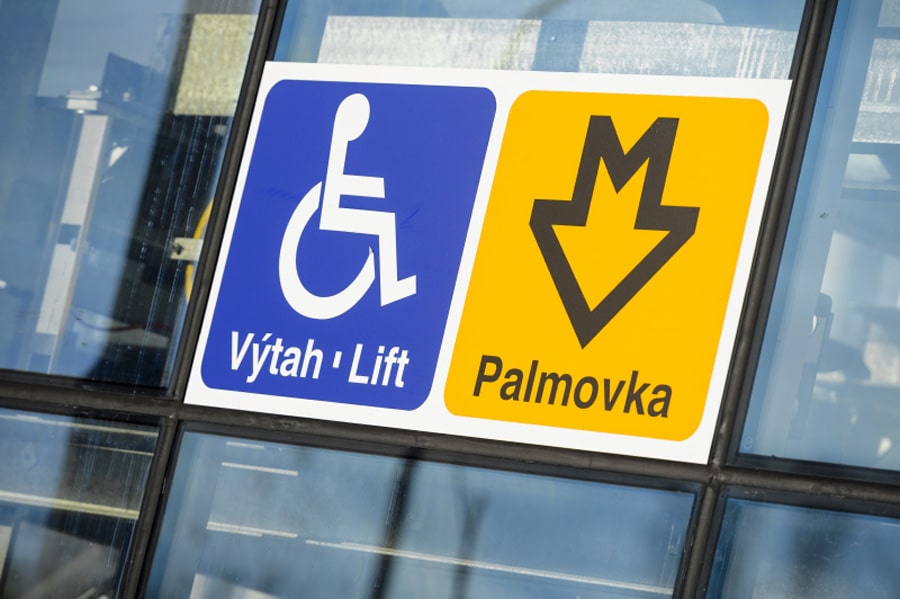
Elevators, custom-designed by BREMA, will ease accessibility for both the physically handicapped and parents with strollers; photo courtesy of DPP. 
Church of the Most Sacred Heart of Our Lord, a Roman Catholic house of worship built between 1929 and 1932 and designed by Slovene architect Jože Plečnik; photo by Aktron for Wikipedia 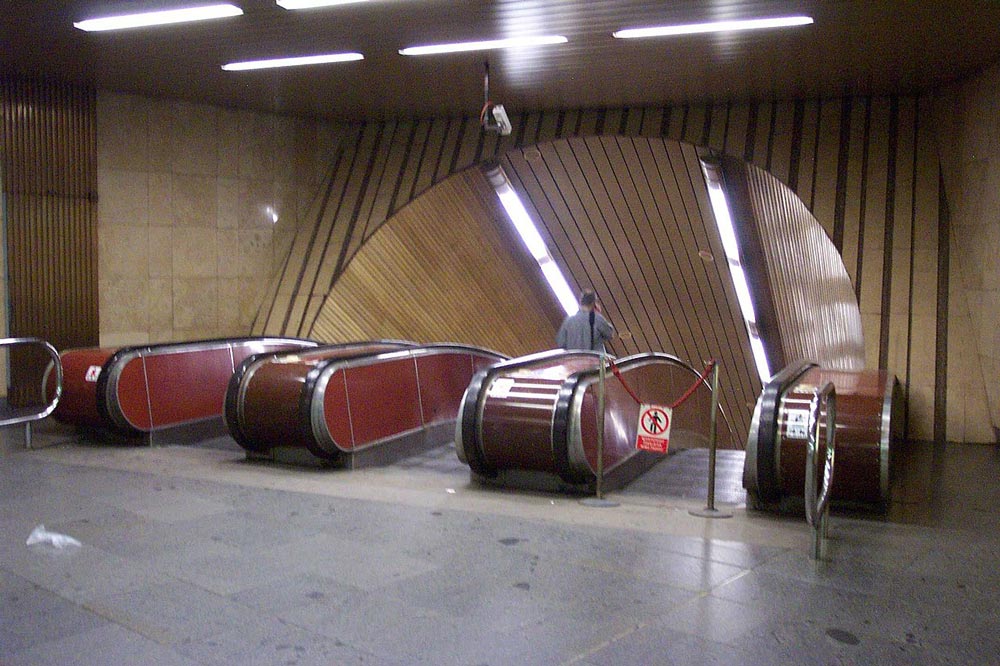
Original escalator design is in dark tones with a textured wooden covering; photo by Aktron for Wikipedia 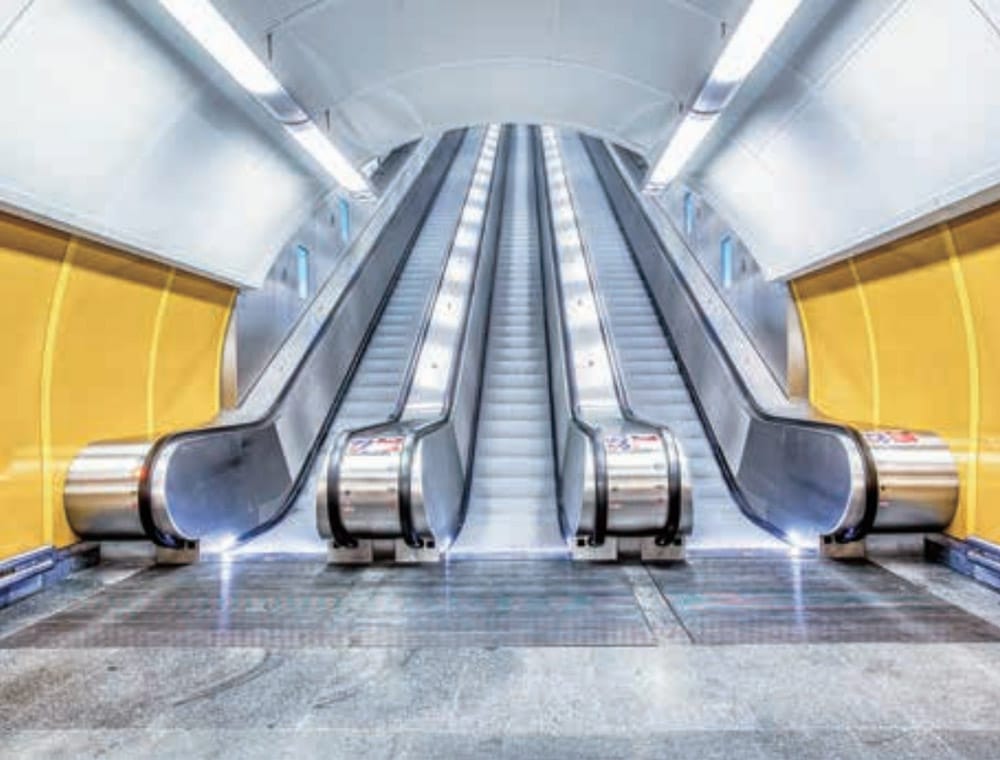
Schindler 9700 heavy-duty escalators at the Národní třída metro station in Prague; photo courtesy of Schindler 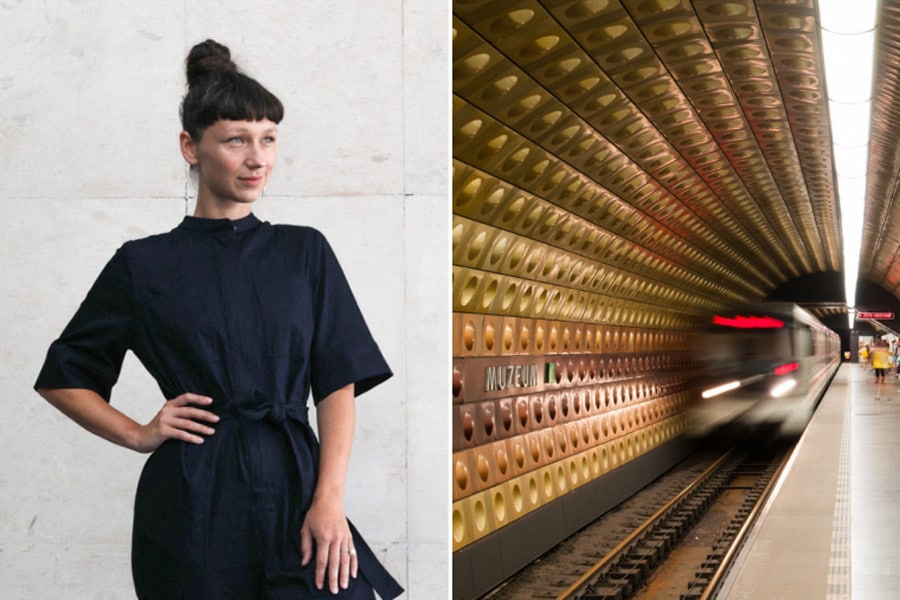
Prague Metro Chief Architect Anna Švarc and the tunnel at the Muzeum station
References
[1] en.wikipedia.org/wiki/Genius_loci
[2] “STRABAG acquires metro projects in Prague,” STRABAG press release, July 29,2021.
[3] en.wikipedia.org/wiki/Jiřího_z_Poděbrad_(Prague_Metro)
[5] Rokosová, Klára, “The metro was the showcase of Czechoslovakia, today its importance is losing, says the chief architect of the Prague underground Anna Švarc,” CZECI—IDESIGN, June 24, 2021
[6] Burns, Tracy A., “Life During the Communist Era in Czechoslovakia,” Prague Blog
Get more of Elevator World. Sign up for our free e-newsletter.









